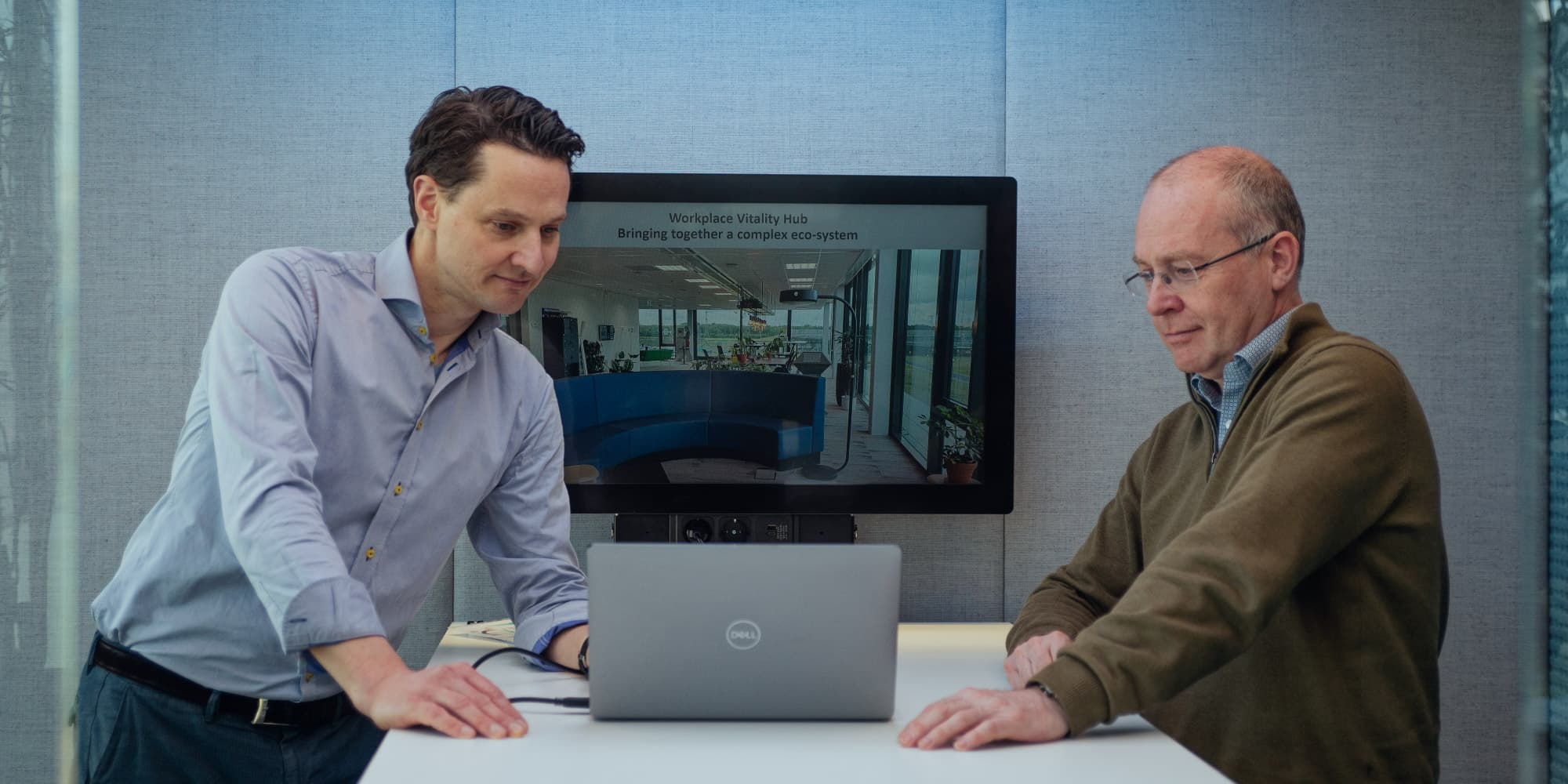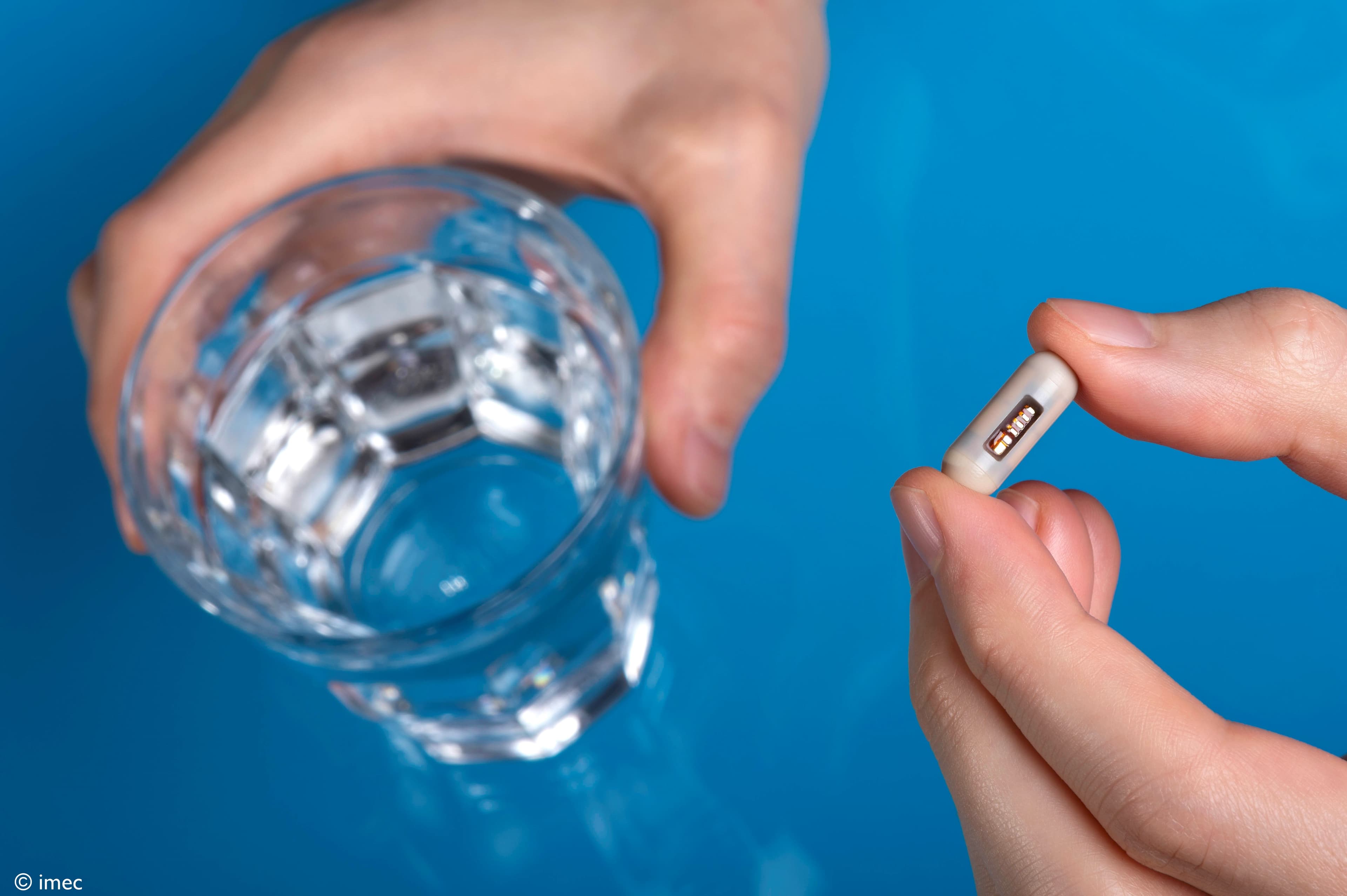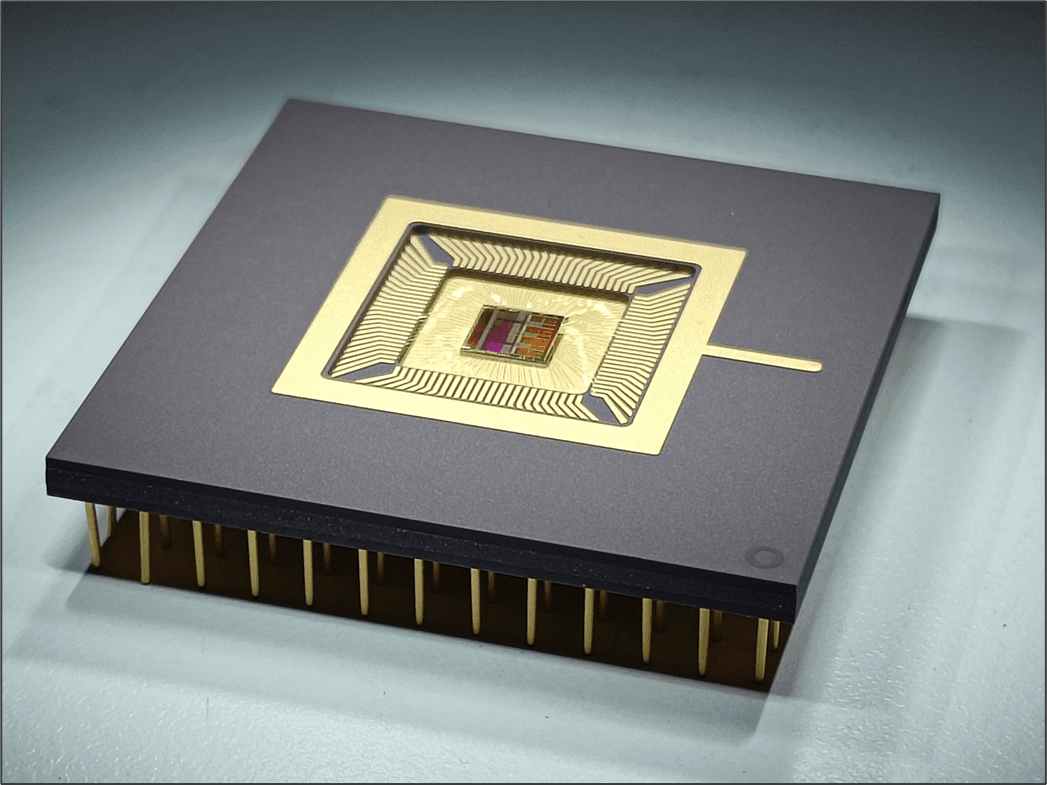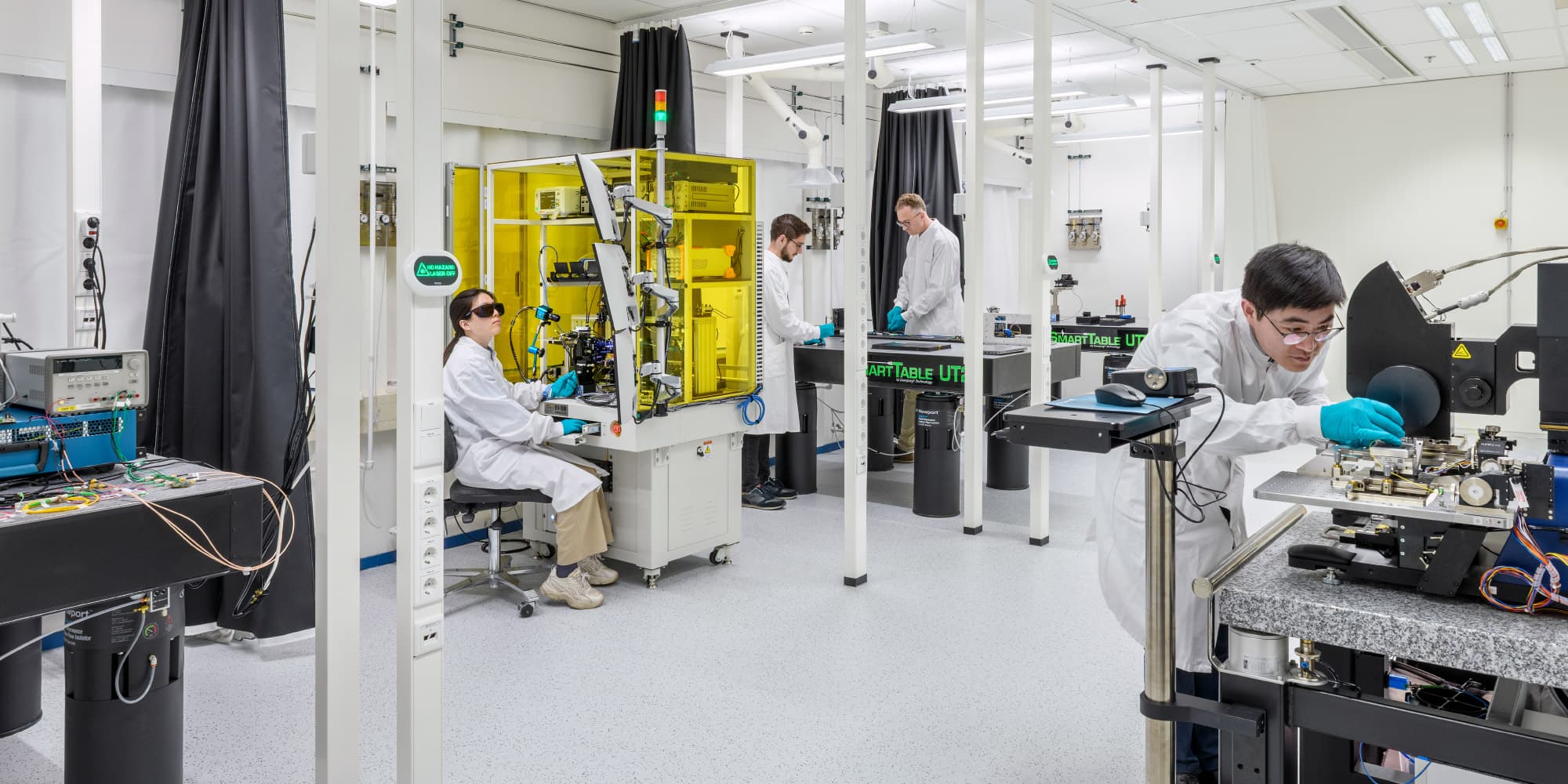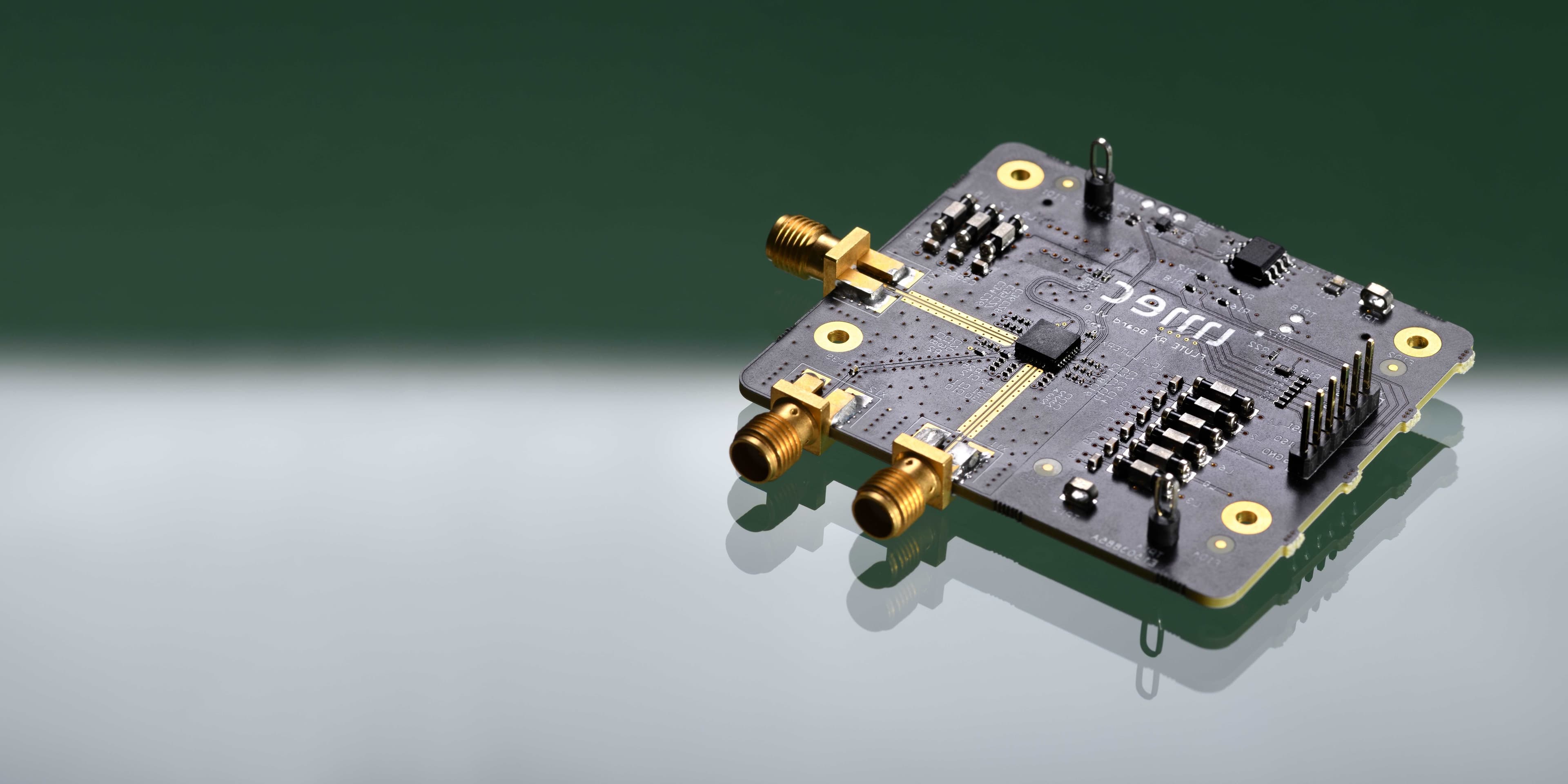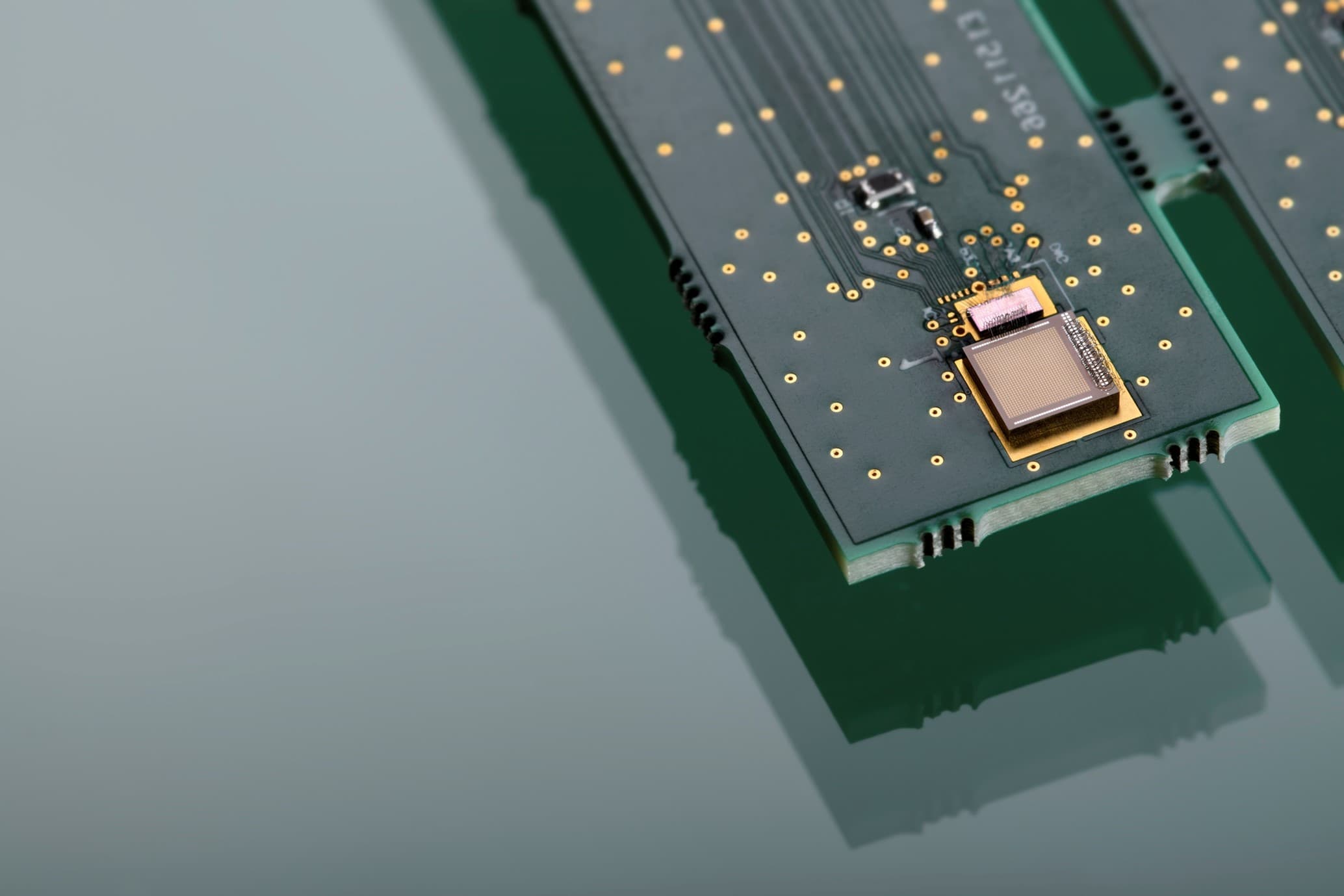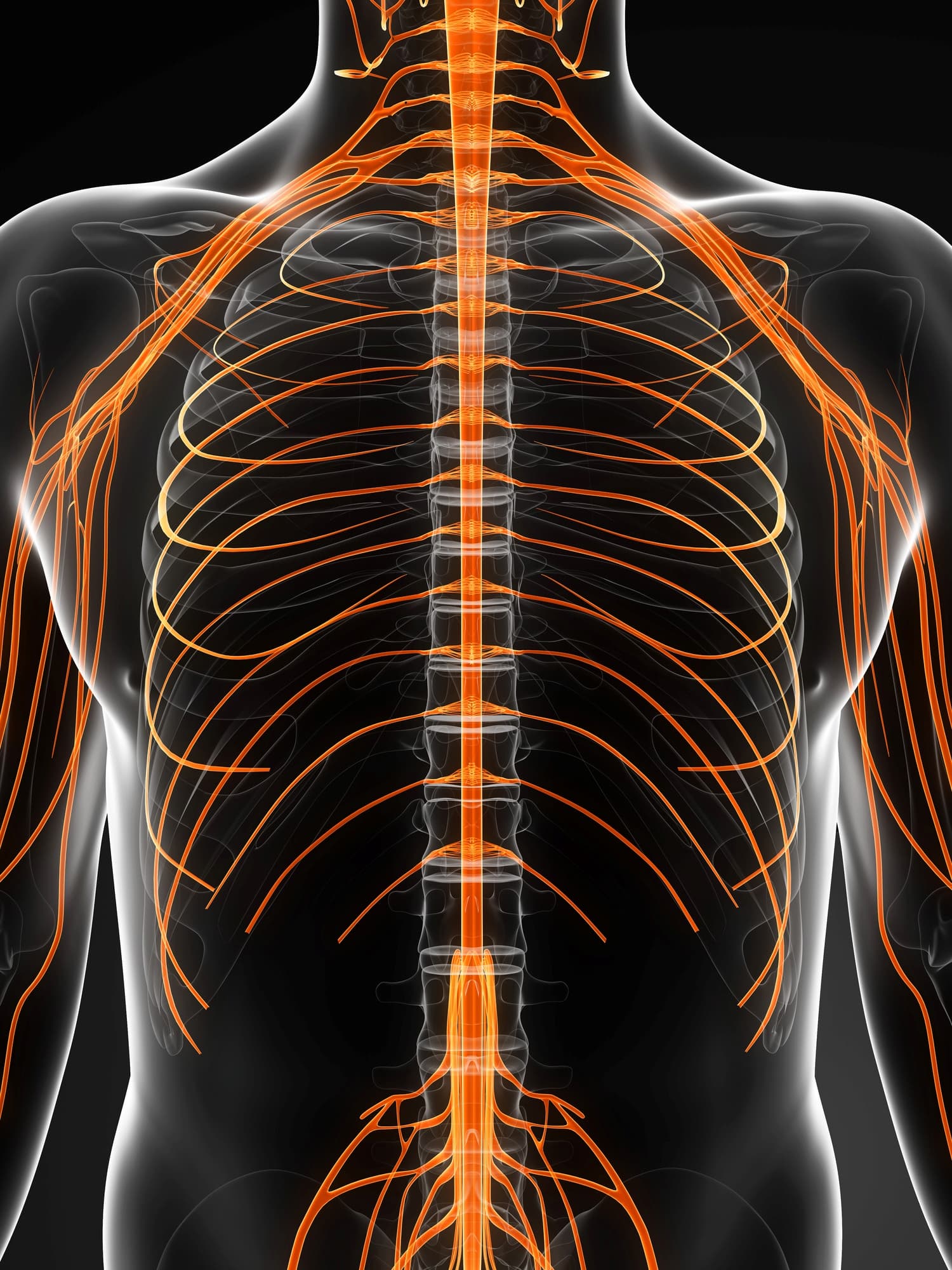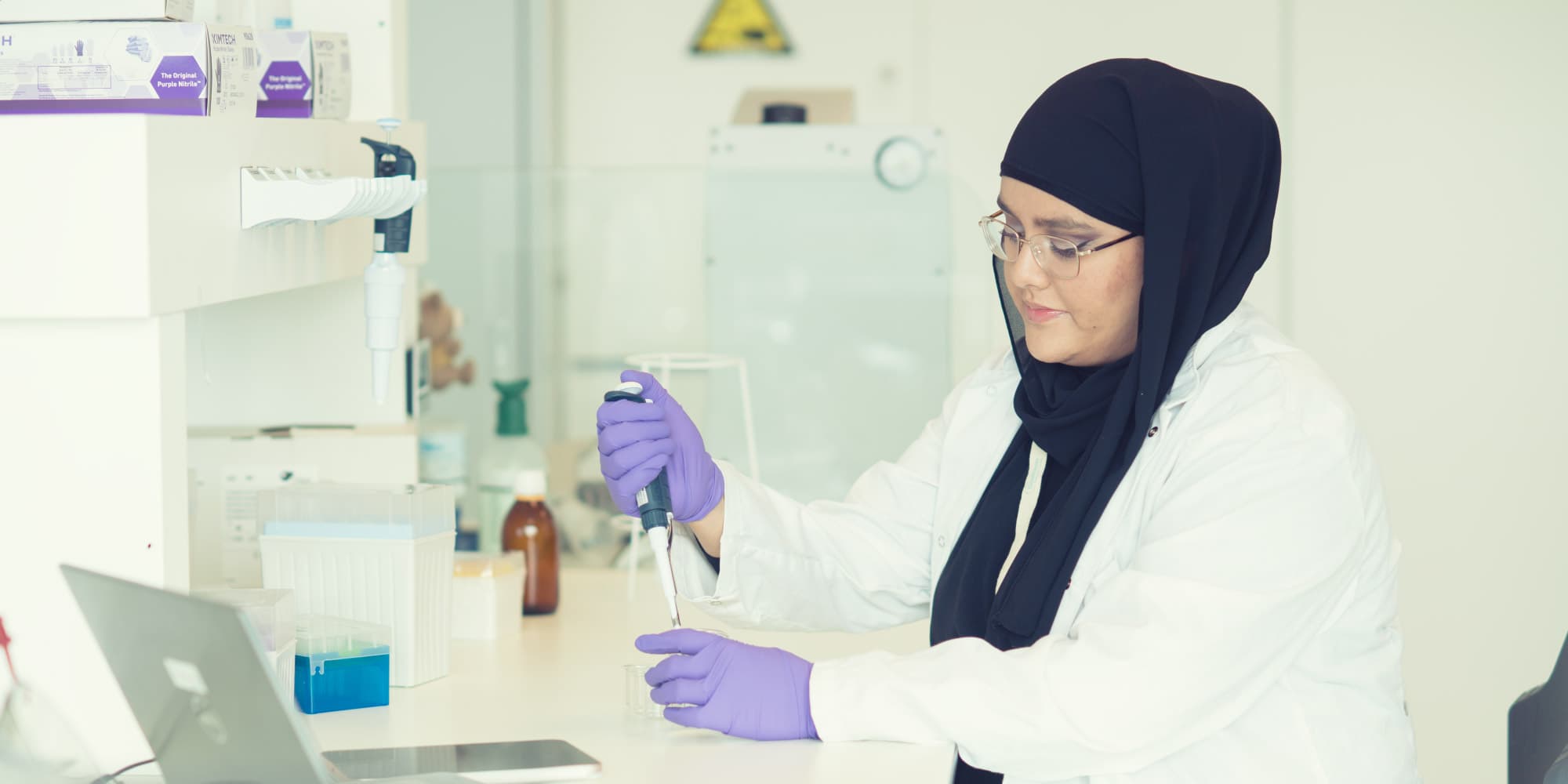How well does a wound heal after surgery? Or how is the disease progressing in a rheumatic patient? These are questions the medical sector faces every day. Imec, a partner in the Holst Centre in the Netherlands, is developing small and energy-efficient bio-impedance chips for a wearable medical product. "Applying the technique in a very small chip is unique," says Lucas Lindeboom, Biomedical Engineer at imec.
Bioimpedance
Bioimpedance is a non-invasive technique in which the body composition is mapped by means of a low-level electrical signal. It is a technology many people already know subconsciously from the special scales at the gym that send a current runs through the body to determine the percentage of body fat. What many do not know is that the technology is also used in the medical sector to measure fluid accumulation in patients with heart and/or kidney failure.
Imec is now taking this technology to the next level. They are working on small chips and wearables that can be used at home or on the road. This may make the frequent use of large hospital devices to monitor the body obsolete in the future. The technology is non-invasive, widely applicable and highly suitable for monitoring the healing of wounds, for example. Even the fluid accumulation in the lungs of patients with heart failure can be monitored.
"Applying this technology in a very small, low-energy chip is unique," says Lindeboom. Although still in the prototype phase, the wearables are already being tested on a limited basis in practice. Willemijn Groenendaal, Principal Scientist at imec explains: "Imec is working with the Future Health department of Ziekenhuis Oost-Limburg in Genk to test and improve the chips, prototypes and algorithms that have been developed. We are working with doctors from different departments and setting up studies to see exactly what is needed to apply our wearables.”
Energy-efficient and safe
The use of chips in medical wearables will offer many advantages for patients in the future. In addition to being wearable, they are small, energy-efficient and extremely suitable to wear without discomfort. "For example, these can be small, smart band-aids with a small battery incorporated. Continuous charging is also no longer necessary," says Groenendaal. Patients do not have to worry about data security, either, as security is high on the agenda at imec. On top of these advantages comes the wide frequency range of the chips in the wearables. This eliminates the need for the large devices currently used for bio-impedance measurements. "We can achieve the same thing, but with a chip of a few millimeters in size.”
Wound healing
Among other things, imec's prototypes can be used to gather information about wound healing. This is extremely useful after knee surgery, for example. "You can imagine that it is then important to keep a close eye on the knee," says Lindeboom. To get answers to that, bioimpedance can be used. It is then an objective measure to determine recovery. Continuous monitoring can also be carried out in troublesome areas, such as leg wounds.”
Joint Infammation
Wearables can also play a role in monitoring joint inflammation, such as in the case of arthritis. For instance, they can monitor how much fluid accumulation there is in a knee, but can also obtain more specific information. "This is still entirely in development, but we think that cell membranes play a role in the inflammatory process," Groenendaal says. "When do the membranes start behaving differently? What happens next when this is the case? We can see the course of inflammation and predict when inflammation worsens. We can also see whether the medication a patient is receiving is sufficiently effective." But research into the use of bioimpedance in wounds and arthritis is really still in its infancy. We're still focusing on developing prototypes right now.”
Kidney dialysis
The use of bioimpedance in kidney dialysis has been studied for many years and can effectively monitor patients' fluid levels. This is necessary because kidney patients sometimes retain large amounts of fluid. The method can therefore be used to determine the target weight of a dialysis patient. Lindeboom says: "With our bioimpedance wearables, patients can see for themselves at home how much fluid needs to be removed from the body," says Lindeboom. "Kidney patients now go to the hospital for dialysis an average of three fixed times. The development of home dialysis systems is on the rise. With home monitoring of fluid levels, it could be that dialysis is carried out in the future only when it is really needed. In that case, the attending physician can watch from a distance. This can reduce the need for the patient to go to the hospital and also help the patient to adjust their diet.”
From wearable to implantable
So, just like the technology in cell phones and other devices, we are seeing bioimpedance technology become smaller and smaller. Measurements can be made at increasingly detailed levels. If we look even further into the future, we will see that, in addition to wearables, implantables will increasingly become the norm. At imec, research is currently being conducted into their possibilities and functioning.
"Implantables have many advantages over wearables," Groenendaal explains. "Take for example a patient with heart failure. Now he or she is asked to step on the scale every day to gather information. An implantable can take measurements without having to bother a patient with that every day." In addition, such an implantable can take much more accurate measurements in places where a wearable cannot. "For example, think about measuring what is happening inside a nerve. With a bioimpedance implantable, you can see if the right nerve is being stimulated in the right way.”
A Boom
In the coming years, research into bioimpedance will take off, Lindeboom and Groenendaal predict. "Over the years, we will be able to make increasingly specific measurements, both in space and over time," says Groenendaal. "In a few years it will already be possible to take measurements at the nerve level using an implantable, but there is still a lot of research to be done. At imec, we are always working on innovative applications for tomorrow. It is incredibly gratifying to see when our applications, such as the technology behind bioimpedance wearables and implantables, prove effective and are adopted by the medical market."
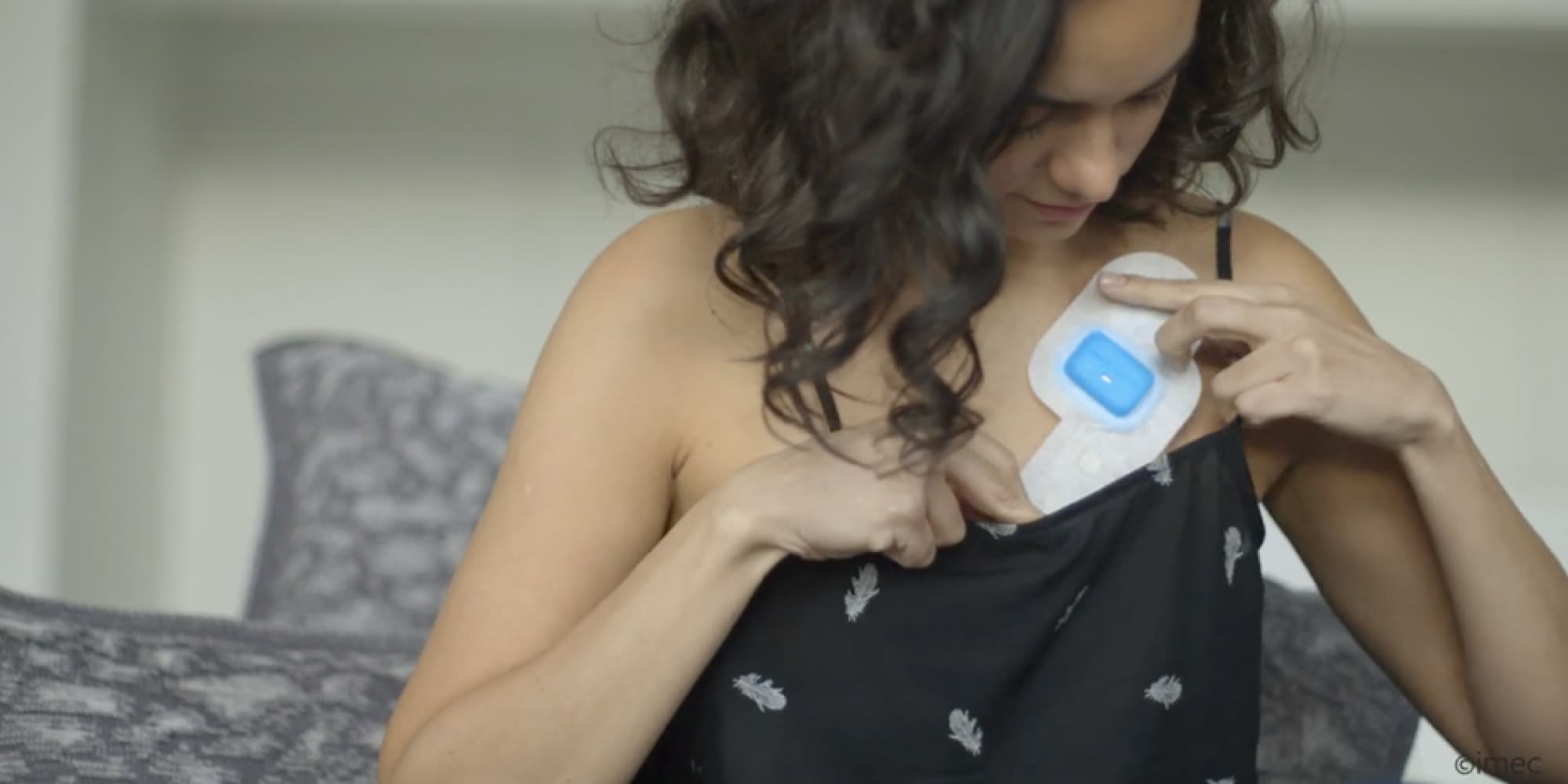
Hoe goed geneest een wond na een operatie? Of hoe staat het ervoor met het ziekteverloop van een reumapatiënt? Het zijn vragen waar de medische sector dagelijks mee te maken krijgt. Imec, partner in het Holst Centre, ontwikkelt kleine, energiezuinige chips om ontstekingswaarden in het lichaam mee te meten, voor in een draagbaar medisch product. ”Het toepassen van de techniek in een zeer kleine chip is uniek”, zegt Lucas Lindeboom, Biomedical Engineer bij imec.
Bio-impedantie: veel mensen kennen de technologie onbewust al van de speciale weegschalen bij de sportschool, waarbij er een stroompje door het lichaam loopt om het vetpercentage vast te stellen. Wat velen niet weten is dat de techniek daarnaast in de medische sector al gebruikt voor het meten van vochtophoping bij patiënten met hart- en of nierfalen. Imec tilt de technologie nu naar een hoger niveau en werkt aan kleine chips en wearables die thuis of onderweg gebruikt kunnen worden. Daarmee is het veelvuldig gebruik van de grote ziekenhuisapparaten om het lichaam te monitoren in de toekomst misschien wel verleden tijd. De techniek is niet-invasief, breed inzetbaar, en uiterst geschikt om bijvoorbeeld de genezing van wonden te monitoren, Ook de vochtophoping in de longen van patiënten met hartfalen kan in de gaten worden gehouden.
“Het toepassen van deze technologie in een zeer kleine, energiezuinige chip is uniek", zegt Lindeboom. Hoewel nog in de prototype-fase, worden de wearables hier en daar al getest in de praktijk. Willemijn Groenendaal, Principal Scientist bij imec licht toe: “Imec werkt onder andere samen met de Future Health afdeling van Ziekenhuis Oost-Limburg in Genk om de chips, prototypes en algoritmen die zijn ontwikkeld te testen en te verbeteren. We werken samen met artsen van verschillende afdelingen en zetten studies op om te kijken wat er precies nodig is om onze wearables toe te passen.”
Energiezuinig en veilig
De inzet van de chips in medische wearables biedt vele voordelen voor patiënten in de toekomst. Naast draagbaar zijn ze klein en energiezuinig gemaakt, uiterst geschikt om te dragen zonder ongemak. “Het gaat bijvoorbeeld om kleine, slimme pleisters met een kleine batterij erin verwerkt. Continu opladen is ook niet meer nodig”, zegt Groenendaal. Ook hoeven patiënten zich geen zorgen te maken over de veiligheid van de data. Security staat bij imec hoog op de agenda. Bovenop deze voordelen komt het grote frequentiebereik van de chips in de wearables. Daardoor zijn de grote apparaten, die nu nog worden ingezet voor de bioimpedantie-metingen, niet meer nodig. “Wij kunnen hetzelfde bereiken, maar dan met een chip van een paar millimeter groot.”
Wondgenezing
Ook bij de monitoring van gewrichtsontstekingen, zoals artritis, kunnen de wearables een rol spelen. Zo kan er gekeken worden hoeveel vochtophoping er in een knie zit, maar kan er ook meer specifieke informatie verkregen worden. “Dit is nog geheel in ontwikkeling, maar we denken dat celmembranen een rol spelen in het ontstekingsproces”, zegt Groenendaal. “Wanneer gaan de membranen zich anders gedragen? Wat gebeurt er vervolgens wanneer dit het geval is? We kunnen het verloop van de ontstekingen inzien en voorspellen wanneer de ontstekingen verergeren. Ook kunnen we bekijken of de medicatie die een patiënt krijgt voldoende werkzaam is.” Maar het onderzoek naar de inzet van bio-impedantie bij wonden en gewrichtsontstekingen staat echt nog in de kinderschoenen. Wij richten ons nu nog op het ontwikkelen van prototypes.”
Nierdialyse
De inzet van bio-impedantie bij nierdialyse wordt al vele jaren onderzocht en kan effectief het vochtniveau van patiënten monitoren. Dat is nodig, want nierpatiënten houden soms grote hoeveelheden vocht vast. De methode kan daarom goed gebruikt worden om het streefgewicht van een dialysepatiënt te bepalen. Lindeboom: “Met onze draagbare bio-impedantie wearables kunnen de patiënten zelf thuis inzien hoeveel vocht er uit het lichaam gehaald moet worden”, zegt Lindeboom. “Nierpatiënten gaan nu op gemiddeld drie vaste tijdstippen naar het ziekenhuis voor dialyse. De ontwikkeling van thuisdialyse systemen is in opkomst. Met thuismonitoring van vochtniveaus kan er in de toekomst wellicht gedialyseerd worden wanneer dat echt nodig is. Dan kan de behandelend arts meekijken op afstand. Dit kan er voor zorgen dat de patiënt minder vaak naar het ziekenhuis hoeft, maar het kan de patiënt ook helpen om zijn of haar dieet aan te passen.”
Van wearable naar implantable
Net zoals de technologie in mobiele telefoons en andere apparaten zien we dus dat de technologie van bio-impedantie steeds kleiner van schaal wordt. Er kan op steeds gedetailleerder niveau gemeten worden. Kijken we nog verder in de toekomst, dan zullen we zien dat, naast wearables, implantables steeds meer de norm worden. Bij imec wordt er momenteel onderzoek uitgevoerd naar de mogelijkheden en werking ervan.
“Implantables hebben veel voordelen in vergelijking met wearables”, legt Groenendaal uit. “Neem bijvoorbeeld een patiënt met hartfalen. Nu wordt gevraagd of hij of zij elke dag op de weegschaal gaat staan om informatie te verzamelen. Een implantable kan metingen uitvoeren zonder dat je daar een patiënt elke dag mee lastig hoeft te vallen.” Daarnaast kan zo’n implantable veel nauwkeuriger metingen verrichten op plekken waar een wearable dat niet kan. “Denk bijvoorbeeld aan het meten wat er gebeurt binnenin een zenuw. Met een bio-impedantie implantable kun je zien of de juiste zenuw op de juiste manier gestimuleerd wordt.”
Een hoge vlucht
Komende jaren zal het onderzoek naar bio-impendatie een hoge vlucht nemen, voorspellen Lindeboom en Groenendaal. “We kunnen over de jaren heen steeds specifiekere metingen verrichten, zowel in ruimte als over tijd”, zegt Groenendaal. “Over een paar jaar is het al mogelijk om op zenuwniveau een meting te doen met behulp van een implantable, maar er moet nog wel veel onderzoek naar gedaan worden. Bij imec zijn we altijd bezig met innovatieve toepassingen van de dag van morgen. Het is vervolgens ontzettend mooi om te zien als onze toepassingen, zoals de technologie achter bio-impedantie wearables en implantables, effectief blijken en worden overgenomen door de medische markt.”
Published on:
1 December 2021


